Your Cart is Empty
Frenchiestore pet supply - Shop Frenchie pajamas, French Bulldog clothing, front D ring harnesses, leashes & more made for French Bulldogs
Frenchiestore pet supply - Shop Frenchie pajamas, French Bulldog clothing, front D ring harnesses, leashes & more made for French Bulldogs
Frenchiestore pet supply - Shop Frenchie pajamas, French Bulldog clothing, front D ring harnesses, leashes & more made for French Bulldogs
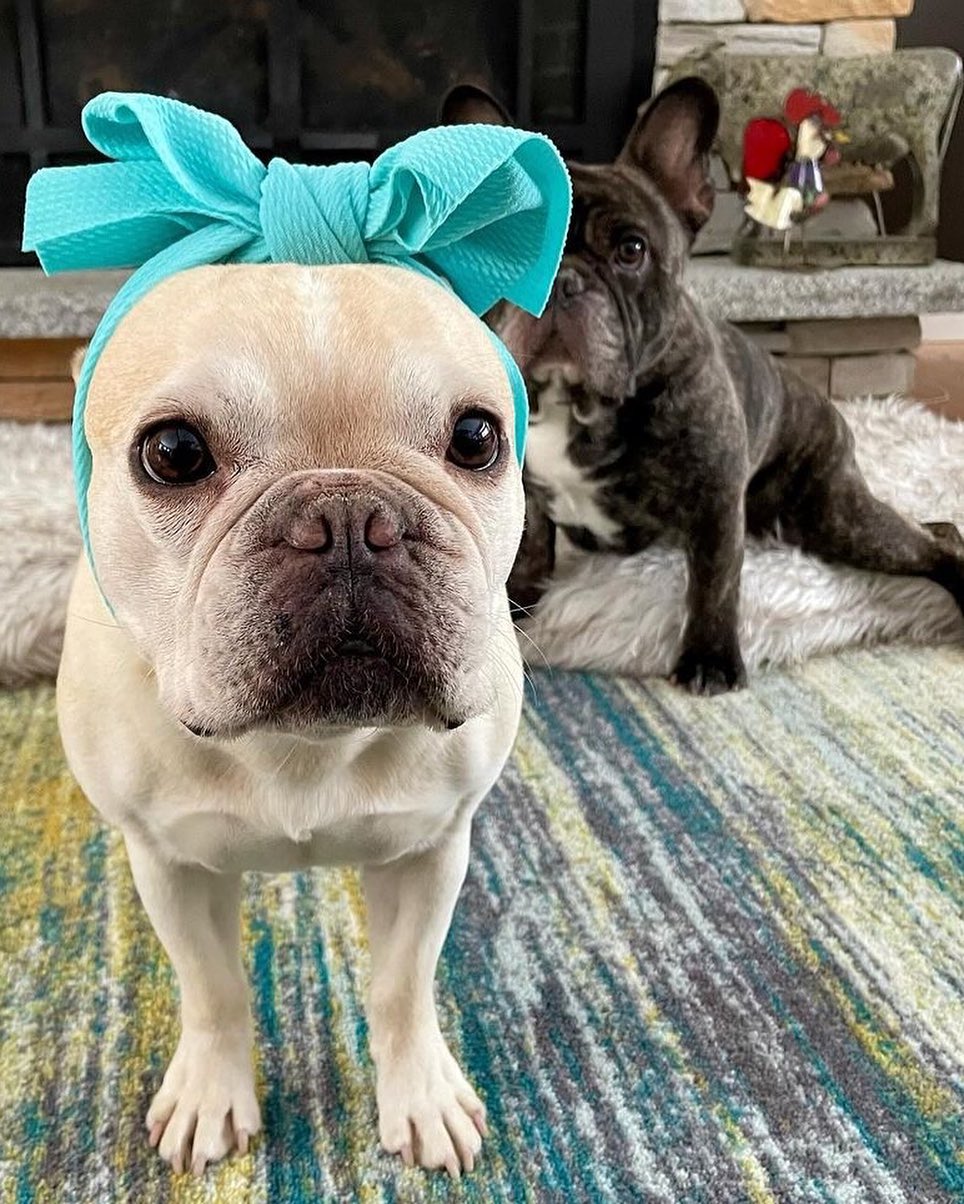
French Bulldogs, with their distinctive appearance and endearing personalities, are prone to certain eye problems. Understanding these issues, their causes, and how to address them is crucial for maintaining the health and well-being of your beloved Frenchie.
French Bulldogs have large, prominent eyes that are more exposed to environmental irritants and injuries. Additionally, their brachycephalic(short-nosed) skull structure can lead to various anatomical abnormalities, such as shallow eye sockets and eyelid abnormalities, which predispose them to certain eye conditions.
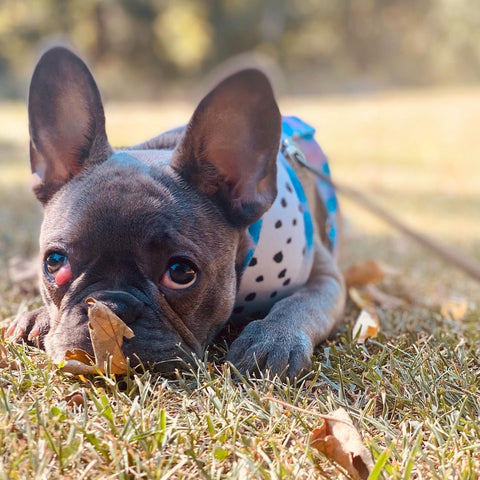 Cherry eye, medically known as prolapsed gland of the third eyelid, is a common eye condition that can affect French Bulldogs, causing discomfort and potential vision impairment.
Cherry eye, medically known as prolapsed gland of the third eyelid, is a common eye condition that can affect French Bulldogs, causing discomfort and potential vision impairment.
Cherry eye occurs when the tear gland within the third eyelid, also known as the nictitating membrane or haw, protrudes or prolapses from its normal position. While the exact cause of cherry eye is not fully understood, it is believed to be related to the weakness of the connective tissue that supports the tear gland. In French Bulldogs, cherry eye is often associated with genetic predispositions and certain anatomical factors, such as shallow eye sockets and laxity of the eyelid tissues.
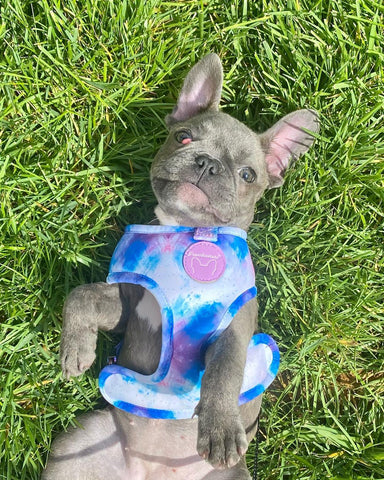 The most obvious symptom of cherry eye in French Bulldogs is the appearance of a red or pink mass protruding from the inner corner of the eye. This swollen, cherry-like mass is typically located beneath the lower eyelid and can vary in size. Other symptoms may include:
The most obvious symptom of cherry eye in French Bulldogs is the appearance of a red or pink mass protruding from the inner corner of the eye. This swollen, cherry-like mass is typically located beneath the lower eyelid and can vary in size. Other symptoms may include:
If left untreated, cherry eye can lead to chronic irritation and potential complications.
If you suspect your French Bulldog has cherry eye, it's essential to seek veterinary attention promptly. Your veterinarian will conduct a thorough eye examination to diagnose the condition and assess its severity. Treatment options for cherry eye may include:
Surgical Correction: Surgical intervention is often necessary to address cherry eye, especially in moderate to severe cases. The most common surgical technique involves repositioning the prolapsed gland back into its normal position and securing it to prevent recurrence. Other surgical approaches, such as gland replacement or removal, may be considered depending on the individual needs of your Frenchie.
Postoperative Care: Following surgical correction, it's essential to follow your veterinarian's postoperative care instructions carefully. This may include administering prescribed medications, such as antibiotics or anti-inflammatory drugs, and monitoring your Frenchie's recovery closely. Attend follow-up appointments as recommended to ensure the surgical site heals properly and to address any concerns promptly.
Entropion occurs when the eyelid rolls inward, causing the eyelashes or skin to rub against the surface of the eye. This inward rolling can lead to irritation, corneal abrasions, and other ocular complications. In French Bulldogs, entropion is often attributed to their brachycephalic (short-nosed) skull structure and certain genetic predispositions.
The symptoms of entropion in French Bulldogs may include:
If left untreated, entropion can lead to chronic discomfort, corneal damage, and potential vision loss.
If you suspect your French Bulldog has entropion, it's essential to seek veterinary attention promptly. Your veterinarian will conduct a thorough eye examination to diagnose the condition and assess its severity. Treatment options for entropion may include:
Topical Medications: In mild cases of entropion, your veterinarian may prescribe topical medications, to alleviate inflammation and discomfort. While these medications may provide temporary relief, they are not a long-term solution for entropion.
Surgical Correction: Surgical correction is the most effective treatment for entropion, especially in moderate to severe cases. The goal of surgery is to reposition the eyelid to prevent it from rolling inward and rubbing against the eye. Various surgical techniques may be used, depending on the individual needs of your Frenchie.
Consultation with a Veterinary Ophthalmologist: In complex or severe cases of entropion, your veterinarian may refer you to a veterinary ophthalmologist, a specialist trained in diagnosing and treating eye conditions in animals. They can provide expert guidance on the most appropriate surgical approach for your Frenchie's entropion.
Following surgical correction of entropion, it's essential to follow your veterinarian's postoperative care instructions carefully. This may include administering prescribed medications, such as antibiotics or anti-inflammatory drugs, and monitoring your Frenchie's recovery closely. Attend follow-up appointments as recommended to ensure the surgical site heals properly and to address any concerns promptly.
Corneal ulcers occur when there is damage or erosion to the corneal surface, the clear outer layer of the eye. Several factors can contribute to the development of corneal ulcers in French Bulldogs, including:
The symptoms of corneal ulcers in French Bulldogs may include:
If left untreated, corneal ulcers can progress, leading to corneal perforation, infection, and potential loss of vision.
If you suspect your French Bulldog has a corneal ulcer, it's crucial to seek veterinary attention. Your veterinarian will conduct a thorough eye examination to diagnose the ulcer and assess its severity. Treatment options for corneal ulcers may include:
Topical Medications: Your vet may prescribe topical antibiotics, anti-inflammatory drugs, or lubricating eye drops to promote healing and reduce the risk of infection.
Protective Eyewear:To prevent further injury or irritation to the affected eye, your veterinarian may recommend using a protective Elizabethan collar (e-collar).
Surgical Intervention: Severe or non-healing corneal ulcers may require surgical intervention.
Postoperative Care: Following treatment, it's essential to follow your veterinarian's postoperative care instructions carefully. This may include administering prescribed medications and monitoring your Frenchie's recovery closely. Attend follow-up appointments as recommended to ensure the ulcer heals properly and to address any concerns promptly.
Dry eye occurs when there is inadequate tear production or abnormal tear composition, leading to insufficient lubrication and moisture on the surface of the eye. Several factors can contribute to the development of dry eye in French Bulldogs, including:
The symptoms of dry eye in French Bulldogs may include:
If left untreated, dry eye can lead to chronic discomfort, corneal damage, and potential vision loss.
If you suspect your French Bulldog has dry eye, it's essential to seek veterinary attention. Your veterinarian will conduct a thorough eye examination to diagnose the condition and assess its severity. Treatment options for dry eye may include:
Artificial Tear Supplements: Your vet may prescribe artificial tear supplements or lubricating eye drops to supplement the natural tear film and alleviate dryness. These drops help moisturize the eyes and promote comfort.
Parotid Duct Transpostion: In some cases, your vet may recommend a procedure where the duct of the parotid salivary gland is repositioned from the mouth to eye for lubrication.
Regular Monitoring: It's important to monitor your Frenchie's eyes regularly and attend follow-up appointments with your veterinarian as recommended. Your vet may need to adjust the treatment plan based on your Frenchie's response and any changes in their ocular health.
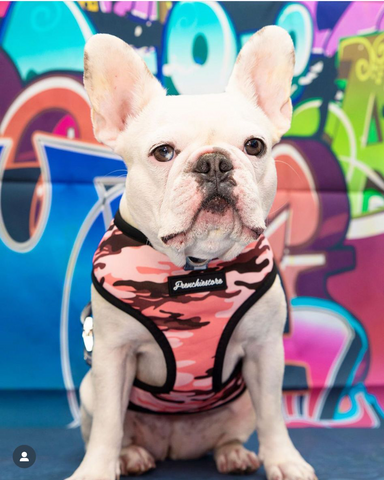
PRA is primarily caused by genetic mutations that affect the photoreceptor cells in the retina, leading to their degeneration over time. While the exact genetic mutations responsible for PRA in Frenchies may vary, the result is the same: progressive and irreversible vision loss.
The onset of PRA typically occurs gradually, and affected French Bulldogs may not show obvious signs of vision impairment in the early stages. However, as the condition progresses, the following symptoms may become apparent:
It's essential to note that PRA does not cause pain or discomfort in affected dogs, but it significantly impacts their quality of life and requires supportive management.
Diagnosing PRA typically involves a comprehensive eye examination conducted by a veterinary ophthalmologist. This may include specialized tests such as electroretinography (ERG) to assess retinal function and confirm the presence of PRA. While there is currently no cure for PRA, management focuses on supportive care and adaptation to vision loss. Management options may include:
Regular Veterinary Check-ups: Schedule regular eye examinations with a veterinary ophthalmologist to monitor the progression of PRA and assess your Frenchie's ocular health.
Environmental Adaptations: Make modifications to your home environment to accommodate your Frenchie's vision impairment. This may include using non-slip mats, providing auditory cues, and avoiding rearranging furniture.
Behavioral Training: Use positive reinforcement techniques to help your Frenchie navigate their surroundings and learn new cues. Training can enhance their confidence and independence despite vision loss.
While French Bulldogs are predisposed to certain eye problems, proactive management and prompt treatment can help mitigate the risk and ensure optimal eye health for your furry friend.
Comments will be approved before showing up.


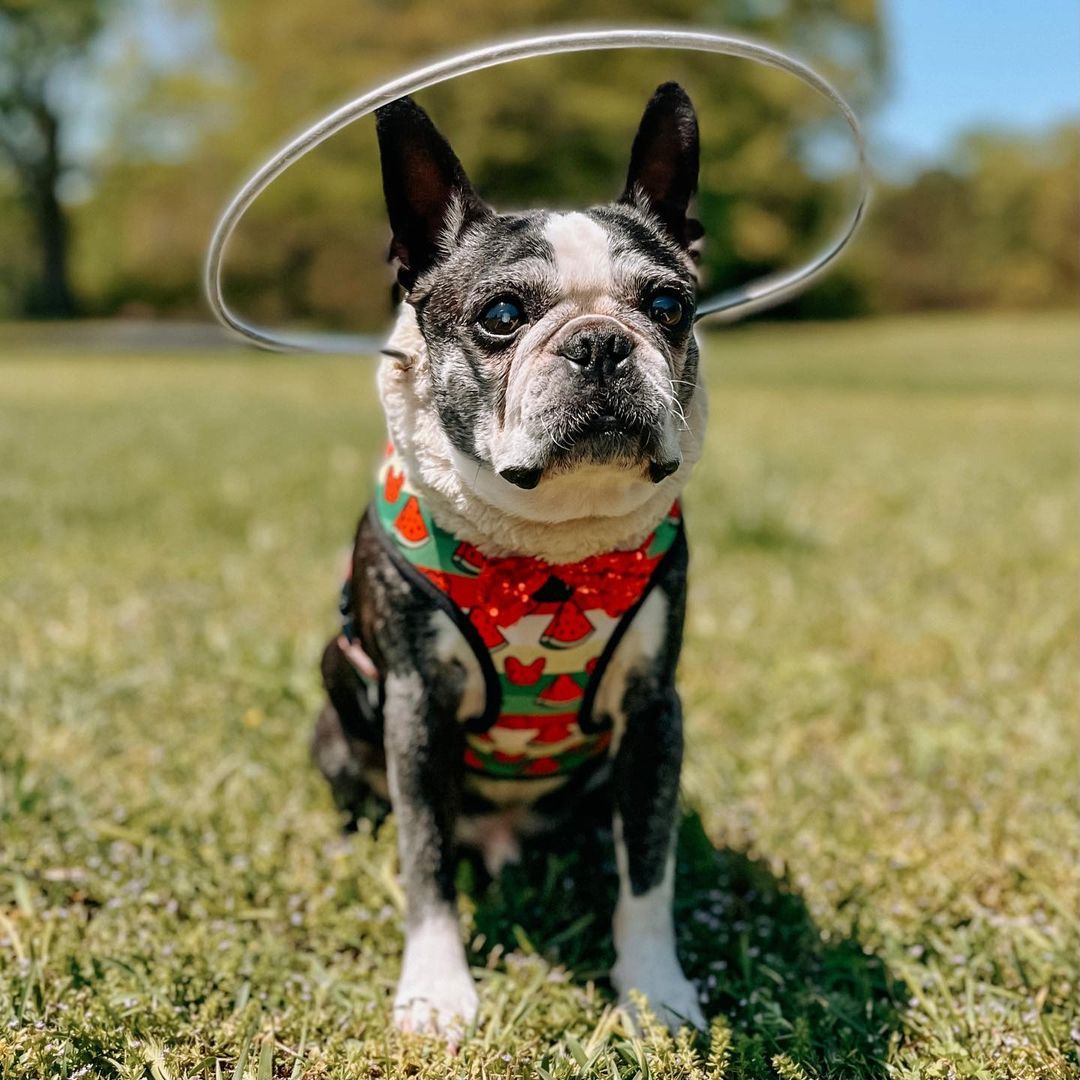
Helpful information on the French Bulldog dog breed.
We will also notify you with new releases and special offers.
Informational posts about French Bulldogs. Tips and helpful advice on the Frenchie breed and other breeds.
Sign up to get information & expert advice about pets' health and safety. We will also notify you with new releases and special offers.